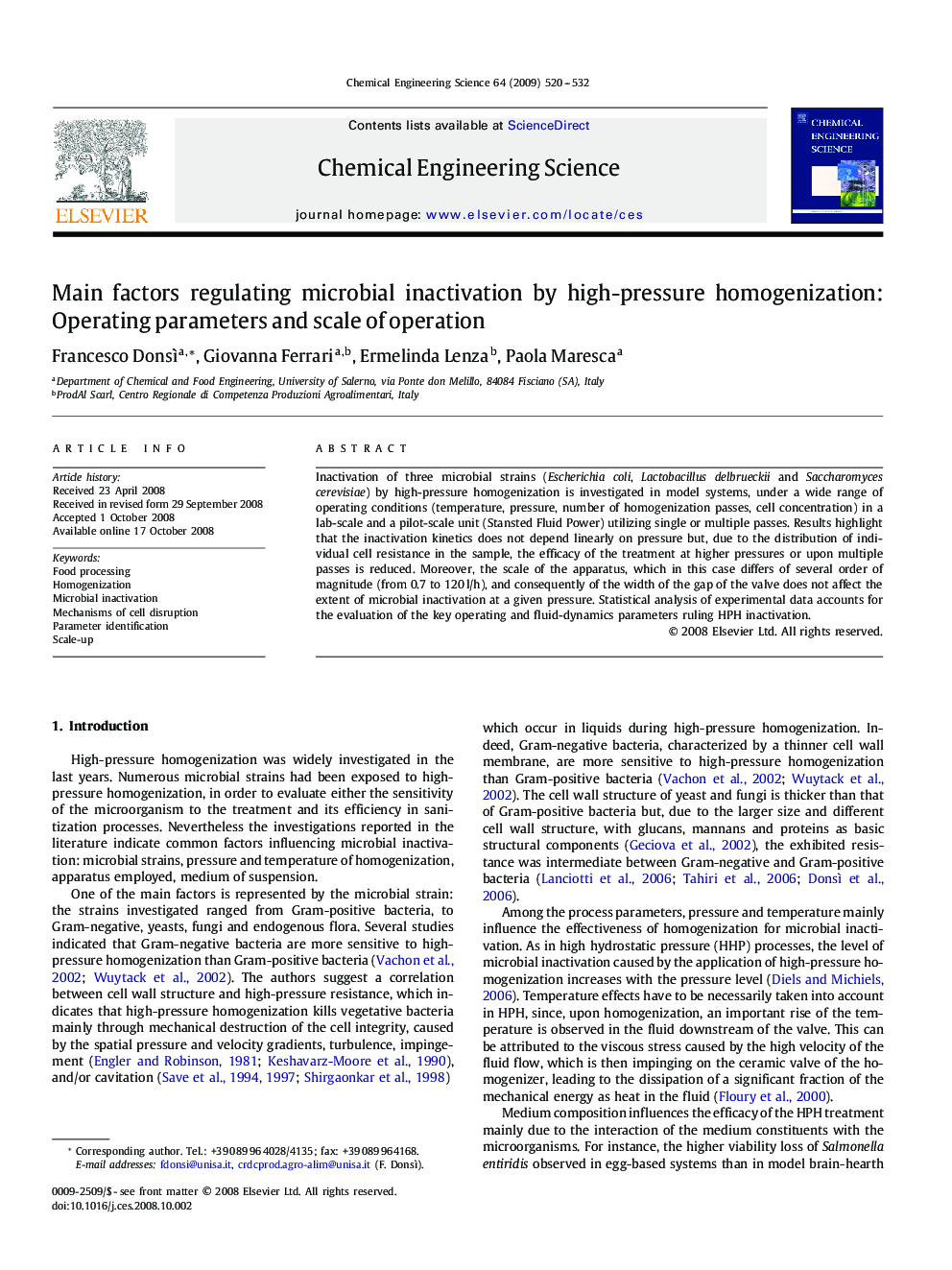| Article ID | Journal | Published Year | Pages | File Type |
|---|---|---|---|---|
| 157233 | Chemical Engineering Science | 2009 | 13 Pages |
Inactivation of three microbial strains (Escherichia coli, Lactobacillus delbrueckii and Saccharomyces cerevisiae) by high-pressure homogenization is investigated in model systems, under a wide range of operating conditions (temperature, pressure, number of homogenization passes, cell concentration) in a lab-scale and a pilot-scale unit (Stansted Fluid Power) utilizing single or multiple passes. Results highlight that the inactivation kinetics does not depend linearly on pressure but, due to the distribution of individual cell resistance in the sample, the efficacy of the treatment at higher pressures or upon multiple passes is reduced. Moreover, the scale of the apparatus, which in this case differs of several order of magnitude (from 0.7 to 120 l/h), and consequently of the width of the gap of the valve does not affect the extent of microbial inactivation at a given pressure. Statistical analysis of experimental data accounts for the evaluation of the key operating and fluid-dynamics parameters ruling HPH inactivation.
